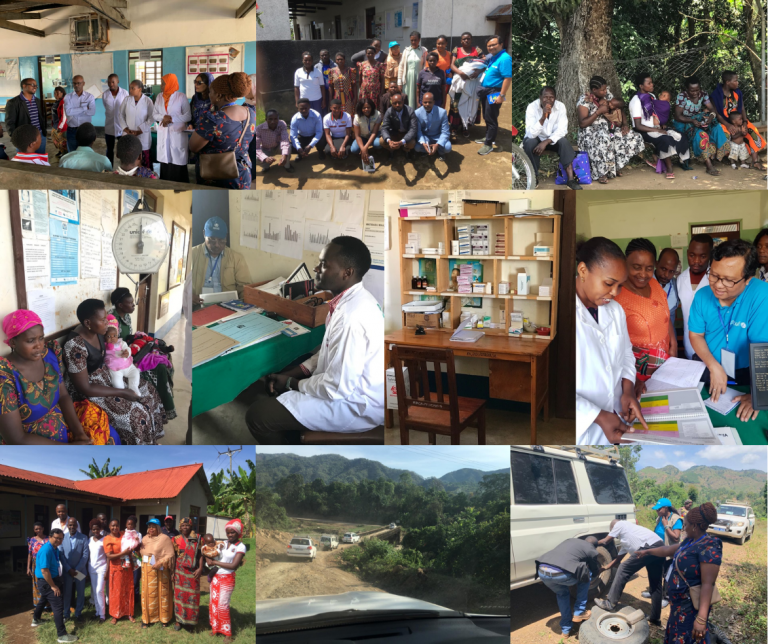By Luwei Pearson
Globally, the number of neonatal deaths declined from 5.0 million in 1990 to 2.5 million in 2018 – in other words, there were 7,000 deaths every day in 2018 compared to 14,000 in 1990. Neonatal deaths accounted for around 47 per cent of all under-five deaths in 2018, increasing from 40 per cent in 1990 due to a faster global decline in mortality among children aged 1–59 months compared to children in their first month of life. The three main causes of newborn deaths are preterm, intrapartum complications and infection. Despite declining neonatal mortality levels, marked disparities in neonatal mortality exist across regions and countries. Sub-Saharan Africa had the highest neonatal mortality rate in 2018 at 28 deaths per 1,000 live births, followed by Central and Southern Asia with 25 deaths per 1,000 live births. A child born in sub-Saharan Africa is 10 times more likely to die in the first month than a child born in a high-income country. In countries affected by conflict, there is an increasing trend of child and neonatal mortality due to reduction of coverage of effective interventions.
The eight participating countries are sharing ten lessons that have been learnt in PSBI implementation throughout the world – in both, higher and lower newborn mortality settings, and stronger and weaker health systems.
- Scaling up PSBI has been done as part of IMNCI (Integrated Management of Neonatal and Childhood Illnesses), not as a stand-alone intervention in the initial randomized control trials (RCT) and intensive learning countries. Introduction of PSBI has presented the opportunity to devolve management of newborn infection to primary health care facilities, especially in high mortality settings. However, health facility readiness in terms of the number of trained health care providers, essential commodities, HMIS, and quality of care of IMNCI requires additional support in order to include PSBI.
- HMIS/DHIS are not developed enough to track PSBI case managed and treatment outcomes. Pakistan and Tanzania have to set up separate systems to collect information. The baseline surveys have primarily focused on health facilities readiness in terms of inputs. The monitoring and endline survey need to document outcomes such as quality of care, the number of postnatal home visits by community health workers (CHW), and cases of newborn infections identified and managed.
- Postnatal home visits for every newborn through trained health workers are imperative for active case seeking, however often not sufficiently implemented in the routine programmes. Two-way referral. And need to advocate for community health platforms where they don’t exist.
- Supplies of Gentamycin and Amoxicillin are not yet part of the essential drugs of countries. WHO and UNICEF must continue to support the review of the national essential drug list for comprehensive Primary Health Care including management of newborn infections.
- Maintain quality and standards: PSBI provides an opportunity to improve quality of care (QoC) of maternal and newborn care and can be integrated with other QoC initiatives where possible. Some countries used three and some others used five danger signs to measure knowledge of health care providers and mothers. Tracking of treatment outcomes is not done systematically.
- Community awareness of newborn danger signs has gaps. Social accountability can be raised through community groups. Further research could be used to identify the most cost-effective means to improve awareness of danger signs, particularly in the context of weak community health worker (CHW) platforms.
- Private health care providers should be involved where private health care is prevalent, for example in Pakistan and Indonesia.
- Financing newborn care: national health insurance, performance-based financing, and contracting out of health services come into play to cover newborn care cost in Indonesia. Such should be considered when introducing PSBI in other settings.
- Policy dialogue: it takes time to negotiate policy changes such as a community health care policy, a treatment guideline of newborn sepsis at PHC setting, or the inclusion of newborn care indicators in HMIS. This was generally experienced as more difficult in Asia.
- Implementation research can help in identifying critical issues. What are the most critical skills to have? What is the most cost-effective way for skill retention? Which innovations in training (e.g d-IMCI) are the most cost-effective and feasible? Are there innovative ways to facilitate early postnatal home visit?
For more information, access the Management of the sick young infant aged up to 2 months: IMNCI training course

One comment